This is a small town with a fascinating chateau and town walls. On the way we detoured to Villedieu-les-Poeles to visit the bell foundry which cast the Peace Bell for Bayeux (and is currently casting a sister bell). The town itself is famous for its copper pans, the <<poeles>> of the name. I could have bought some, at very great expense and considerable weight. All kudos to my sister who bought a whole set in France years ago and shipped them home.
The foundry still uses the age old techniques, some of which involve goat hair and cow dung mixed in clay, and the same metal composition as has always been used to make their bells. The mould has to be constructed to produce a hollow form complete with words and decorations (using the lost wax process) and the bell, no matter its size, must be fully poured in 3 minutes or the metal may begin to solidify. It involves both heavy physical work and artistic skills. Afterwards, the bell is perfectly tuned by “gently” grinding the inside with an angle grinder (not so traditional). The outside may be sandblasted to make a silvery look, or treated with various compounds to create golden or darker hues. In time any bell will become dark and a little green.
It was pouring rain today. We went on to Granville, a city on the sea, but while we overlooked the harbour as we ate a light lunch, it wasn’t weather conducive to exploration. We did see a few of those grim German bunkers on top of the hill.
In Vitre things were no better. We had chosen a small, traditional French hotel, Le Petit Billot. Madame was gregarious and charming, happy to point out all the things we should see. But it was wet and cold and I was unwell, so I put myself to bed and Nick dined alone. In the morning the weather was slightly better and we could look around.
The town is loaded with streets of medieval, half timbered houses and people live and work in them. This is not a museum town or particularly a tourist town; though there are many empty shops in the medieval core there are also lots of residences in surrounding suburbs and the place is full of business people during the day.
The beautiful old Benedictine abbey church seems now to be the parish church and they are renovating some of the monastery nearby. It was odd in that the choir (altar and surrounds) is at an angle to the nave, something it is difficult to show in photographs. The nave ceiling is a gorgeous ship’s keel wooden type.
The drawpiece is the chateau, restored by a disciple of Viollet le Duc and absolutely huge. The pointy rooves may not be original but it is as faithful a renovation as possible around the turn of last century. One vast section is now the Town Hall, the castle itself is contiguous with the city walls and it is a remarkable place to visit.
While we visited a few other places such as the Chapel of St Nicholas, photos were not allowed. It housed regional church treasures and some, such as the art deco chalice, were very beautiful indeed.
The next morning we dropped into the Chateau of Madame Sevigny, famed for her letters to her daughter. She seemed to prefer living at this rather small and countrified chateau. We were disappointed in the visit. We could only walk in part of the gardens and grounds, and while they had good bones, they were not well presented, with flower borders very sparse and parterre patterns marked by swathes cut in the grass. We couldn’t access the front of the building as that is now part of a golf course. Disappointing!
Tomorrow: Cancale (and Lynn gets her feeds of oysters)
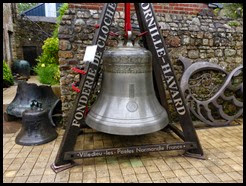

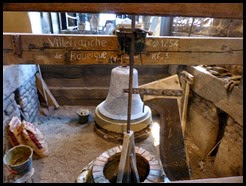
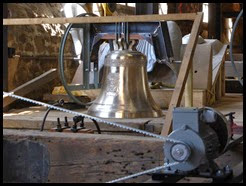
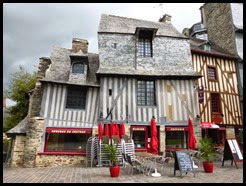
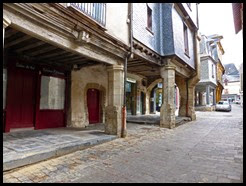


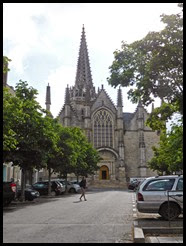
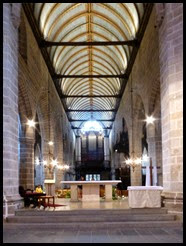
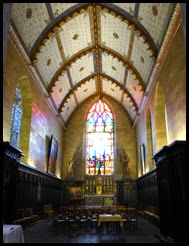
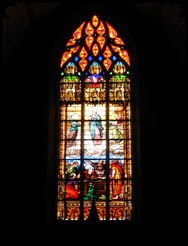
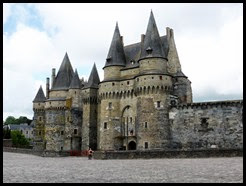
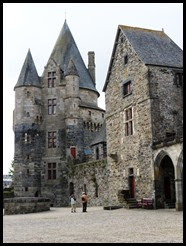
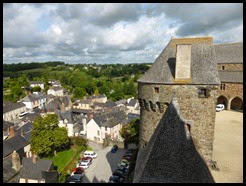
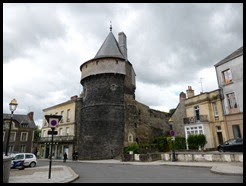
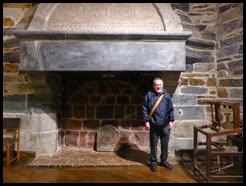


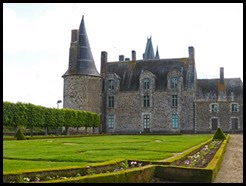
No comments:
Post a Comment